To clean a turtle tank with vinegar, follow these steps: First, empty the tank and remove any debris. Next, mix a solution of vinegar and water, using a 1:1 ratio.
Then, scrub the tank with the vinegar solution using a soft brush or sponge. Rinse the tank thoroughly, making sure to remove all traces of vinegar. Finally, refill the tank with fresh, dechlorinated water and return your turtle to its clean habitat.
By using vinegar as a natural and safe cleaning agent, you can effectively maintain a healthy environment for your turtle.
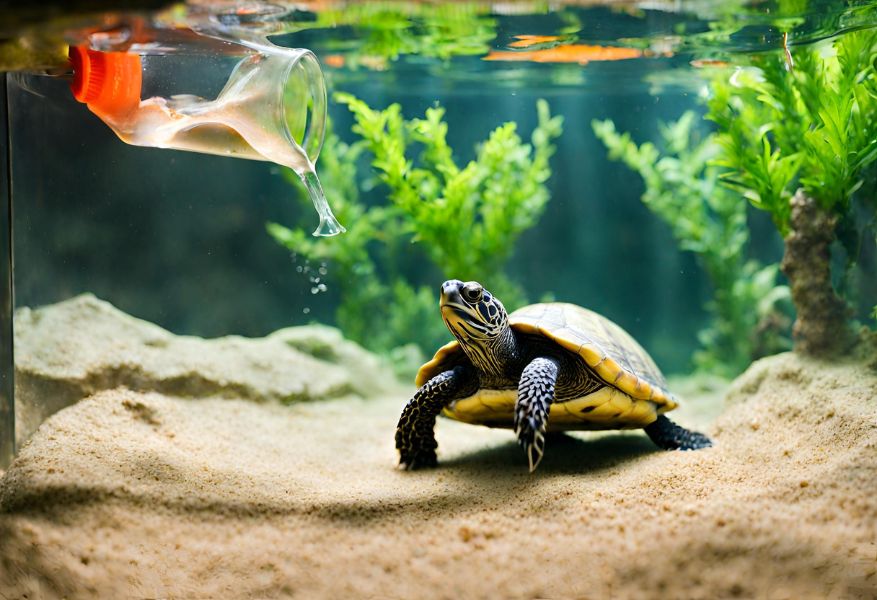
Why Use Vinegar For Cleaning A Turtle Tank
When learning how to clean a turtle tank, using vinegar as a cleaning solution can be an effective and safe option. The natural properties of vinegar make it an excellent choice for maintaining a clean and healthy environment for your turtles. Let’s delve into the reasons why vinegar is a great choice for cleaning your turtle tank.
Safe For Turtles
Vinegar is safe for turtles as it is a natural and non-toxic cleaning agent. Unlike harsh chemical cleaners that can be harmful to your turtles, vinegar provides a gentle yet effective cleaning solution that won’t pose any risk to their health.
Effectively Removes Stains And Odors
Using vinegar to clean a turtle tank effectively removes stains and odors. Its acidic nature helps to break down mineral deposits, algae buildup, and other stubborn residues, leaving the tank clean and odor-free. Additionally, vinegar’s natural deodorizing properties help eliminate any unpleasant smells, providing a fresh and healthy habitat for your turtles.
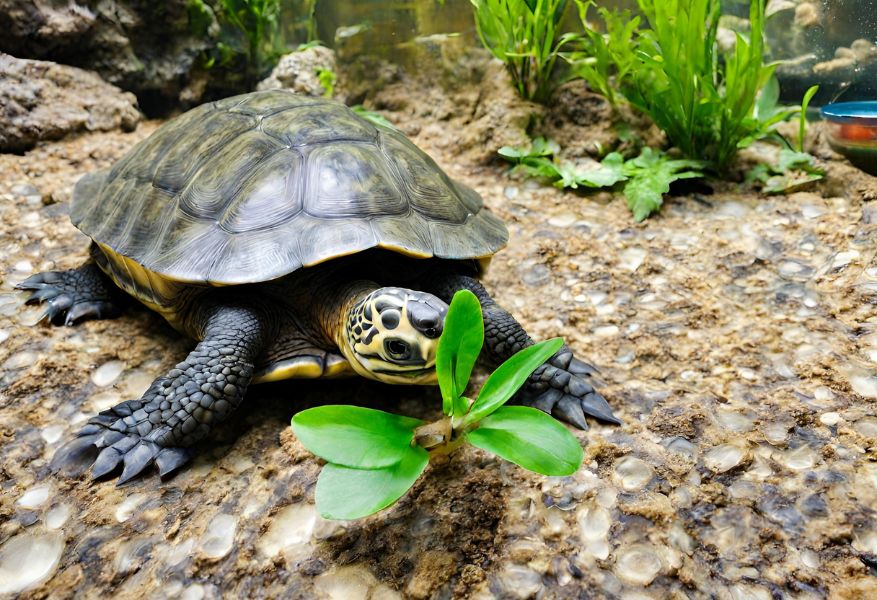
Preparing The Turtle Tank
Before you can start cleaning your turtle tank with vinegar, it’s important to properly prepare the tank. This involves removing your turtle and any decorations, as well as draining the tank and discarding the old water. Follow the steps below to ensure a clean and healthy environment for your aquatic friend.
Remove The Turtle And Any Decorations
Begin by gently capturing your turtle and placing it safely in a separate container. Make sure the container is a suitable size and filled with clean water for your turtle to swim in while you clean its tank. Remove any decorations such as rocks, plants, or toys from the tank and set them aside. These will need to be cleaned separately.
Drain The Tank And Discard Old Water
Next, carefully drain all the water from the tank. You can do this by using a siphoning tube or a bucket to scoop out the water. Be sure to remove all the water, including any residue at the bottom of the tank. Once the tank is empty, discard the old water and any debris you find.
Remember, it’s essential to provide a clean and safe environment for your turtle. Part of achieving this involves regularly cleaning the tank to prevent the buildup of harmful bacteria and algae. By properly preparing the turtle tank, you lay the foundation for an effective and thorough cleaning process. Now that the tank is empty and free from your turtle and decorations, it’s time to proceed with cleaning using vinegar.
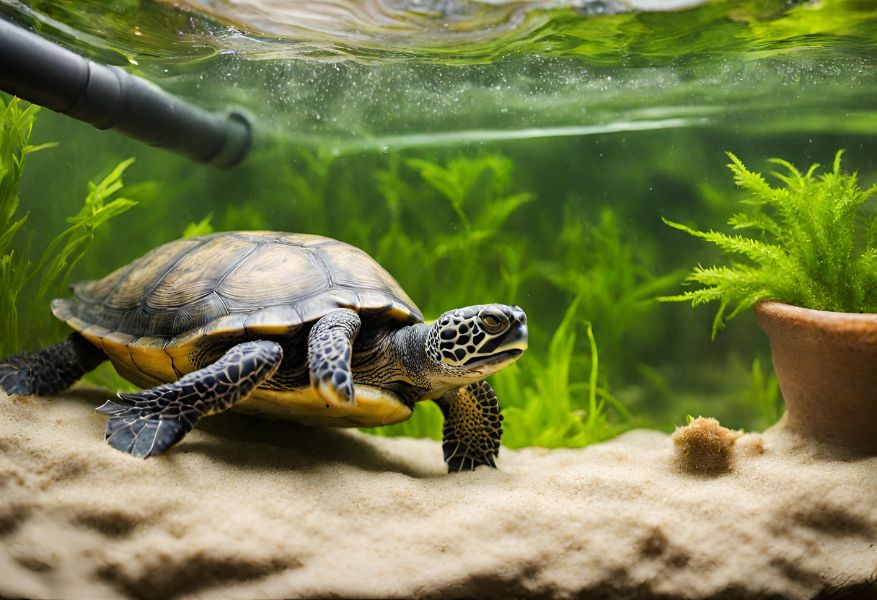
Mixing The Vinegar Solution
Learn how to clean your turtle tank effectively using a vinegar solution. This simple and eco-friendly method helps remove dirt and grime, keeping your turtle’s habitat clean and healthy.
Mixing the Vinegar Solution
One of the most effective and affordable ways to clean a turtle tank is by using a vinegar solution. Vinegar’s natural acidity helps to break down dirt, grime, and stubborn stains, leaving your tank sparkling clean. In this section, we will discuss the proper ratio of vinegar to water for cleaning your turtle tank, as well as how to adjust the solution for stubborn stains.
Use 1 part vinegar to 4 parts water:
When mixing your vinegar solution, it is important to maintain the right balance. The recommended ratio is 1 part vinegar to 4 parts water. This allows for effective cleaning without overwhelming the tank with vinegar’s acidity.
To create the solution, simply combine the vinegar and water in a clean container. Stir well to ensure the vinegar and water are thoroughly mixed. Remember to use distilled white vinegar, as other types may contain additives that could harm your turtle.
Adjust the ratio for stubborn stains:
While the 1:4 ratio is suitable for regular cleaning, stubborn stains may require a stronger vinegar solution. In such cases, you can adjust the ratio to 1 part vinegar to 2 or 3 parts water. This higher concentration of vinegar will provide more cleaning power to tackle those tough stains.
To adjust the ratio, simply increase the amount of vinegar and decrease the amount of water accordingly. For instance, if you are using 1 cup of vinegar in the regular solution, you can increase it to 2 or 3 cups for stubborn stains. Remember to stir well to ensure proper mixing.
By using the appropriate vinegar solution, you can easily clean your turtle tank and maintain a healthy living environment for your pet. Whether you are dealing with regular cleaning or stubborn stains, adjusting the vinegar-to-water ratio will help you achieve the desired results. Give your turtle a sparkling clean tank by harnessing the cleaning power of vinegar.
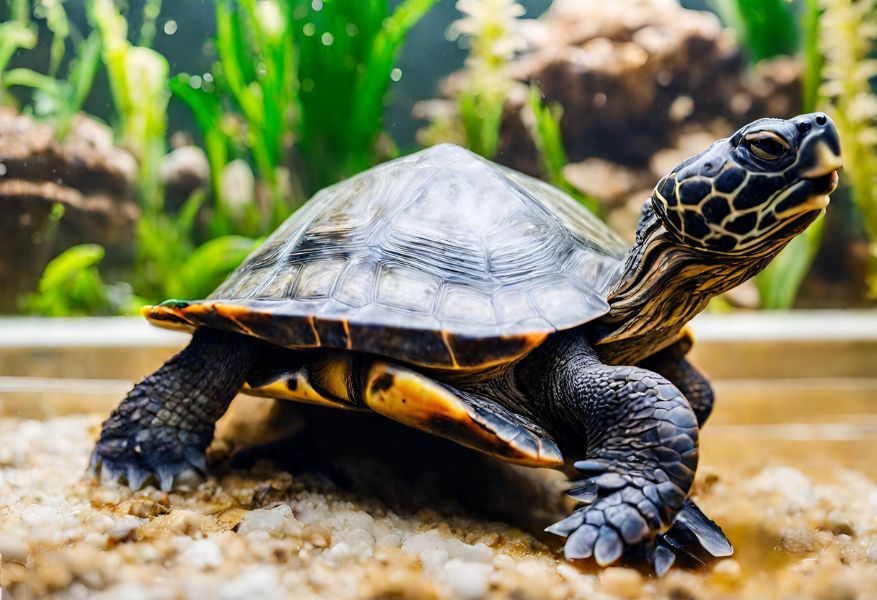
Cleaning The Turtle Tank
Cleaning your turtle tank is essential to ensure your pet’s health and well-being. Regular cleaning helps to eliminate harmful bacteria, algae, and other impurities, providing a clean and safe environment for your turtle. One effective and eco-friendly way to clean your turtle tank is by using vinegar.
Scrub The Tank Walls And Bottom With The Vinegar Solution
Prepare a solution of water and vinegar, using a 1:1 ratio. Use a soft sponge or brush to scrub the tank walls and bottom with the vinegar solution. Thoroughly clean the surfaces to remove any algae, mineral deposits, or other debris. Vinegar’s natural acidity helps break down stubborn residue, leaving your tank clean and sanitized without the use of harsh chemicals.
Rinse The Tank Thoroughly With Clean Water
Once you have finished scrubbing the tank with the vinegar solution, rinse it thoroughly with clean water to remove any traces of vinegar. Make sure to rinse multiple times to ensure there is no residual vinegar left in the tank. This step is crucial to prevent any potential harm to your turtle when they are reintroduced to the tank.
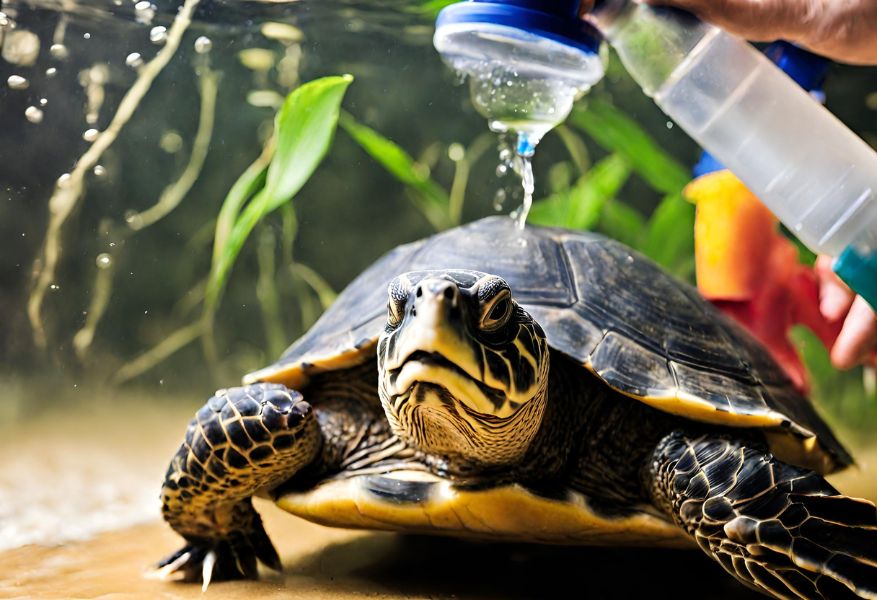
Preparing The Tank For The Turtle
To prepare the turtle tank for cleaning with vinegar, start by removing the turtle to a temporary holding area. Next, empty the tank, then wipe it down with a solution of water and vinegar. Rinse thoroughly with water before refilling the tank and reintroducing the turtle.
Remember to do this process regularly for a clean and healthy tank environment.
Fill The Tank With Fresh Water
To prepare the tank for your turtle, start by filling it with fresh water. It’s important to use clean, chlorine-free water that is at an appropriate temperature for your turtle’s species. Tap water can contain harmful chemicals, so consider using filtered or dechlorinated water. Fill the tank to a level that allows your turtle to swim comfortably but still provides enough space for a basking area. It’s crucial to maintain a clean and healthy environment for your pet.
Replace Decorations And Return The Turtle
Once the tank is filled with fresh water, it’s time to replace any decorations or objects that were removed during the cleaning process. A turtle tank needs to provide stimulation and enrichment for your pet, so be sure to include items that offer hiding spots, climbing surfaces, and basking areas. Ensure that the decorations are clean and in good condition, without any sharp edges that can harm the turtle.
Carefully return your turtle to its newly cleaned and prepared tank. Gently place the turtle in the water, making sure it’s comfortable and able to move around freely. Allow your pet to acclimate to its environment, ensuring it can easily access the basking area. Monitoring the turtle’s behavior after cleaning the tank is essential to address any potential issues or stress.
Remember, maintaining a clean turtle tank is important for the health and well-being of your pet. Regular cleaning and proper care are necessary to prevent the buildup of harmful bacteria and to keep the water clean and clear. By following these steps, you can ensure a clean and safe living space for your turtle.
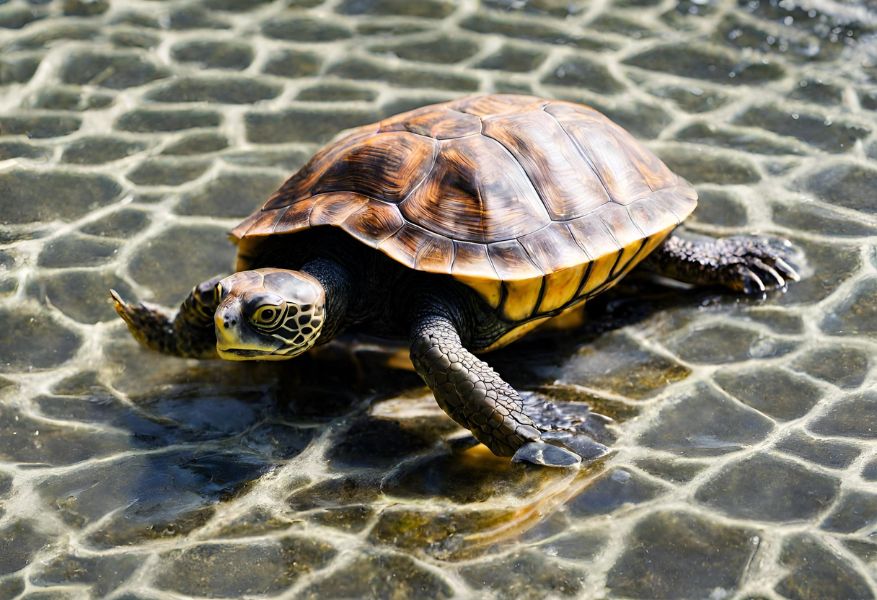
Frequently Asked Questions
Can Vinegar Be Used To Clean A Turtle Tank?
Yes, vinegar can be used to clean a turtle tank. It is a natural and effective cleaning agent that helps remove dirt and bacteria. Mix one part vinegar with three parts water and scrub the tank with this solution. Rinse thoroughly before putting the turtle back in.
What Is Safe To Clean A Turtle Tank With?
To clean a turtle tank, you can use a mixture of vinegar and water or a specially formulated commercial turtle tank cleaner. Avoid using chemicals, soaps, or ammonia-based cleaners as they can harm turtles. Clean the tank regularly to maintain a healthy environment for your turtle.
Can I Use Dawn Dish Soap To Clean My Turtle Tank?
Yes, you can use Dawn dish soap to clean your turtle tank. It’s safe and effective in removing dirt and residues without harming your turtles. Just make sure to thoroughly rinse the tank after cleaning to ensure no soap residue remains.
Can Turtles Drink Vinegar?
No, turtles cannot drink vinegar. It is not safe or healthy for them to consume.
Conclusion
Using vinegar to clean your turtle tank is a safe and effective method. It helps in removing stubborn algae and mineral deposits without harming your turtle. Regular cleaning and maintenance will ensure a healthy environment for your pet. By following these simple steps, you can maintain a clean and healthy environment for your beloved turtle.

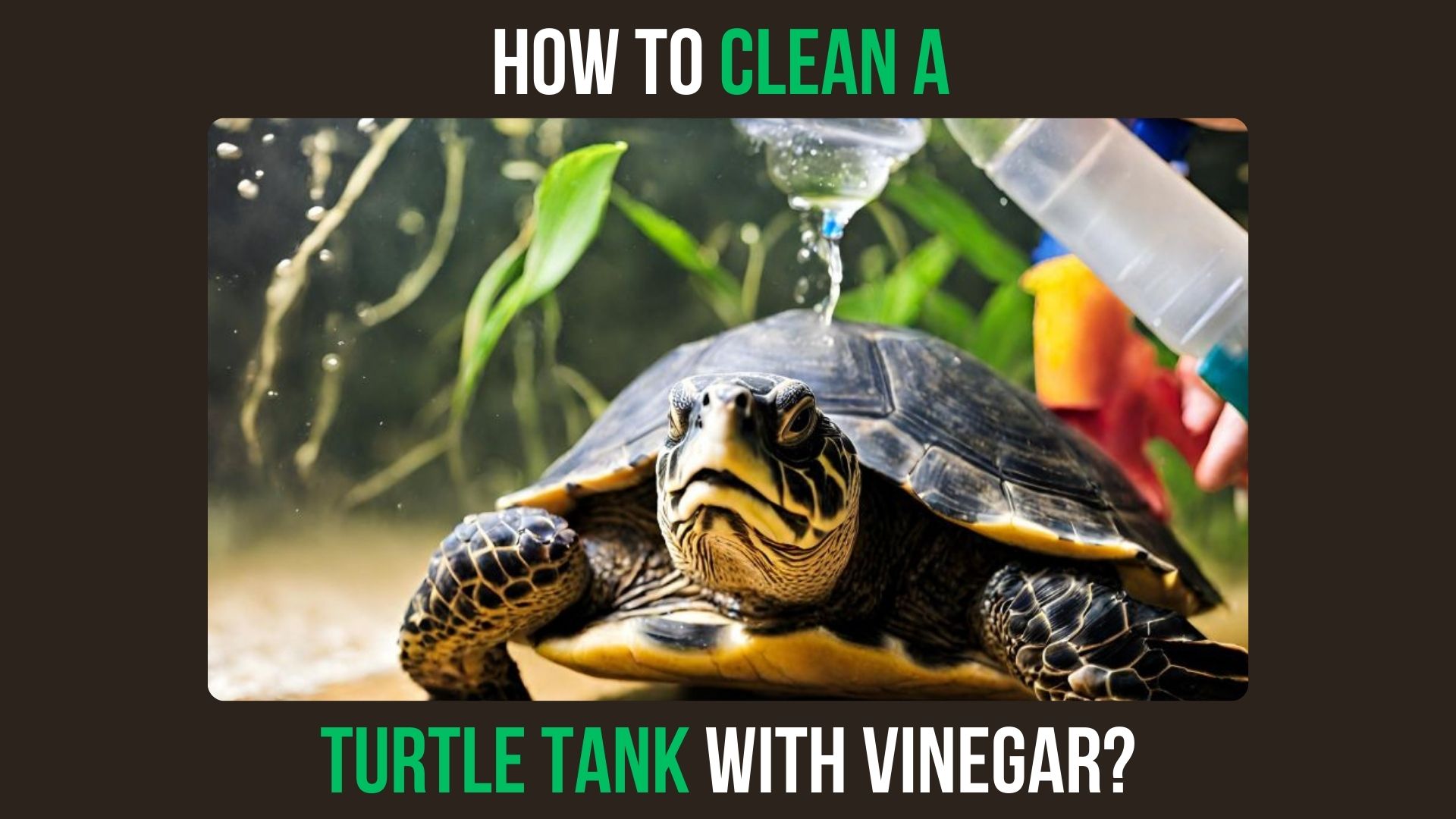



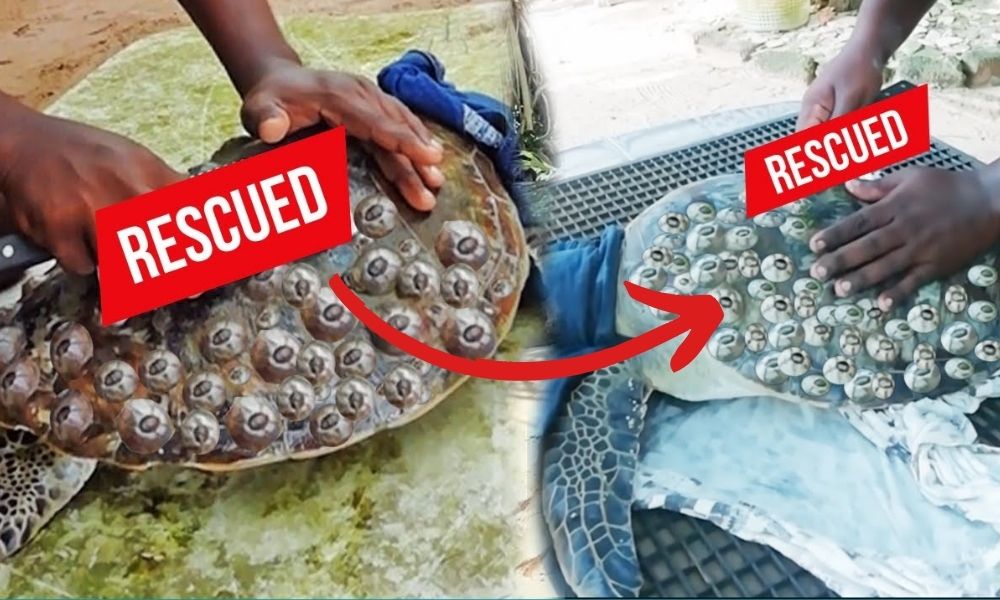
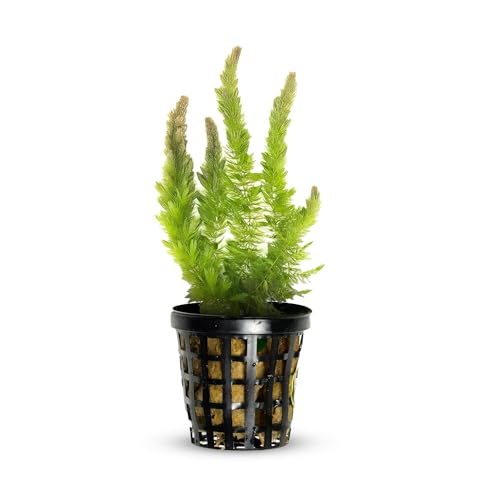
Leave a Reply